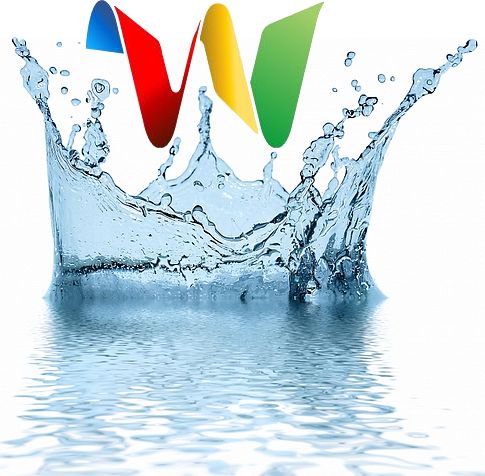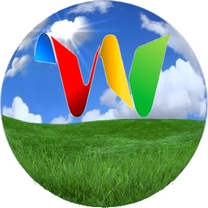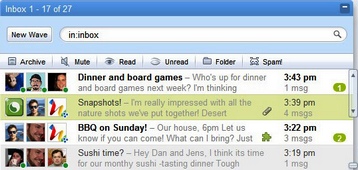 Photo credit: cookelma edited by Daniele Bazzano
In one short sentence: Email is a completely inadequate messaging infrastructure for communication, data sharing and information publishing to really satisfy today's typical consumer and enterprise needs.
This is why Google Wave and its revolutionary approach hold so much promise and potential for the ways in which we are going to communicate and share information in the near future.
Google Wave is important first and foremost because it is a revolutionary, disruptive rule-changing technology that goes right into denting the very habits and standard approaches we use in our daily work life.
Photo credit: cookelma edited by Daniele Bazzano
In one short sentence: Email is a completely inadequate messaging infrastructure for communication, data sharing and information publishing to really satisfy today's typical consumer and enterprise needs.
This is why Google Wave and its revolutionary approach hold so much promise and potential for the ways in which we are going to communicate and share information in the near future.
Google Wave is important first and foremost because it is a revolutionary, disruptive rule-changing technology that goes right into denting the very habits and standard approaches we use in our daily work life.
"Wave is an open-source set of protocols, platforms and products that enable anyone to put together services that allow people to create and share content and display applications with one another using non-proprietary web programming standards."Google Wave has the potential to sweep aside some of the many obstacles limiting corporate work productivity, enterprise data sharing and effective collaboration, and, if successful, it could impact organizational work in a way that may deeply change the way people inside companies operate and create value. If your suspicion too, is that sooner than expected you'll see Wave inside your own Gmail inbox, the analysis that follows is going to help you better understand the value and opportunities that may likely emerge with the arrival of this new technology. While other companies are still trying to leverage their ownership of technology intellectual property, Google learned long ago that it's far more important to own the moments that people create when interacting with technology itself. Here is content media expert John Blossom, analysis on what Google Wave is and may soon become:
One Space To Rule The Cloud: Google Wave Creates a Backbone For The Real-Time Web
by John BlossomIt's been a busy week for attention-getting events in content technologies, with the Google I/O developer's conference in San Francisco vying for mindshare with the All Things D conference in San Diego. Both were important events in their own right, with Steve Ballmer's announcement of a preview launch for Microsoft's new Bing search engine facing off against Google's announcement of Google Wave, a new technology that promises to deliver a new standard for common messaging and collaboration infrastructure for both the web and enterprises. Hmm, yet another stab at launching a Live.com successor versus a reworking of email, wikis, real-time messaging and file sharing in one swoop. Which event should Walt and Kara have been covering in more detail? I think that I'll take door two, though Bing is worth taking a gander at in its own right. Mind you, Google giving away free Android phones with a month's free call and data time to developers at I/O certainly upped the attention-getting factor a little bit, as well.
The Google Wave Revolution
 Google Wave is important for any number of reasons, but it's important first and foremost because many major technology companies could have done this, and probably should have, but chose to stick with incremental improvements to older software technologies.
Back in the 1970s, for example, when it was a big deal to get messages from one person to another person on a remote computer, the Simple Mail Transfer Protocol (SMTP) was an important tool to facilitate widely different computing platforms to pass messages to one another.
Good stuff in its time, to be sure, but today the fundamental concept of email is entirely out of step with today's communications methods, where message content tends to be shared and stored in web cloud infrastructure rather than being scooted around to storage devices at the edge of the web.
Add in mashups, instant messaging and the real-time broadcast capabilities of services such as Twitter and it's clear that email is a completely inadequate messaging infrastructure for building content services that really satisfy today's sophisticated consumer and enterprise audiences.
Yet for decades interoperable standards for a successor to email sponsored by major technology companies have been no-starters.
Enter Google Wave, a new communications technology that made its debut at Google's recent I/O conference for developers.
Built to leverage the emerging HTML 5 standards for content and software services delivered via web browsers, Wave is an open-source set of protocols, platforms and products that enable anyone to put together services that allow people to create and share content and display applications with one another using non-proprietary web programming standards.
Given that the web has been overshadowed recently by proprietary products such as Apple's iPhone and Amazon's Kindle and applications environments such as Adobe Air, Google Wave is a very strong statement from Google that the common and open standards of the web are the key to unlocking the full potential of the most valuable communications medium ever invented.
Wave is also an extremely strong challenge to Microsoft and just about every major software and services provider hoping to take some piece of the emerging world of real-time collaborative communications that spans consumers, enterprises and an expanding multitude of mobile and desktop computing platforms.
While other companies are still trying to leverage their ownership of technology intellectual property, Google learned long ago that it's far more important to own the moments that people interact with technology.
Some people try to call those moments "media", but Google was one of the first companies to realize that these transitory moments were far more valuable and complex than both traditional media companies and technology companies had imagined.
Google Wave is important for any number of reasons, but it's important first and foremost because many major technology companies could have done this, and probably should have, but chose to stick with incremental improvements to older software technologies.
Back in the 1970s, for example, when it was a big deal to get messages from one person to another person on a remote computer, the Simple Mail Transfer Protocol (SMTP) was an important tool to facilitate widely different computing platforms to pass messages to one another.
Good stuff in its time, to be sure, but today the fundamental concept of email is entirely out of step with today's communications methods, where message content tends to be shared and stored in web cloud infrastructure rather than being scooted around to storage devices at the edge of the web.
Add in mashups, instant messaging and the real-time broadcast capabilities of services such as Twitter and it's clear that email is a completely inadequate messaging infrastructure for building content services that really satisfy today's sophisticated consumer and enterprise audiences.
Yet for decades interoperable standards for a successor to email sponsored by major technology companies have been no-starters.
Enter Google Wave, a new communications technology that made its debut at Google's recent I/O conference for developers.
Built to leverage the emerging HTML 5 standards for content and software services delivered via web browsers, Wave is an open-source set of protocols, platforms and products that enable anyone to put together services that allow people to create and share content and display applications with one another using non-proprietary web programming standards.
Given that the web has been overshadowed recently by proprietary products such as Apple's iPhone and Amazon's Kindle and applications environments such as Adobe Air, Google Wave is a very strong statement from Google that the common and open standards of the web are the key to unlocking the full potential of the most valuable communications medium ever invented.
Wave is also an extremely strong challenge to Microsoft and just about every major software and services provider hoping to take some piece of the emerging world of real-time collaborative communications that spans consumers, enterprises and an expanding multitude of mobile and desktop computing platforms.
While other companies are still trying to leverage their ownership of technology intellectual property, Google learned long ago that it's far more important to own the moments that people interact with technology.
Some people try to call those moments "media", but Google was one of the first companies to realize that these transitory moments were far more valuable and complex than both traditional media companies and technology companies had imagined.
Google Wave Main Features
 If you can find the time it's really worth it to go through the full video of the demo that shows all of the potential of Wave as a messaging medium. For those that don't have the time, here's a brief tick list of things that will leave you oohing, aahing and - hopefully - thinking:
If you can find the time it's really worth it to go through the full video of the demo that shows all of the potential of Wave as a messaging medium. For those that don't have the time, here's a brief tick list of things that will leave you oohing, aahing and - hopefully - thinking:
- A "wave" can be any number of digital objects - messages, documents, images, embedded applications - that can be exposed to people just by dragging and dropping a profile icon into the Wave object.
- Wave enables concurrent real-time information transfer to and from collaborators. So although you can view completed messages in Wave as you would an email, instant message or other completed communication, you can also experience it as a real-time conversation or collaboration. As you type, the characters of your message appear in the other person's browser as they are being typed. People can type together in multiple languages (with real-time translation as needed). The real-time semantic spell-checker is pretty amazing in the demo. The open-source Wave protocol makes this all happen.
- Wave objects can start out as a simple message, have replies and participants added, enables people to share private messages from within the wave, can allow people to edit an object concurrently and to view those edits as they are happening concurrently, can use rich text with drag and drop hyperlinks, allows the dragging and dropping of videos, images, texts, hyperlinks, enables rich tagging - and can do this all in real-time on any platform that uses the Wave protocols, including enterprise platforms.
- Anyone can develop Wave-compatible applications, including those who want them "inside the firewall" of an enterprise. Demos were given on Wave working in Google's own Chrome browser but also Firefox and on iPhones as well as Google's own Android mobile smart phones. Examples in the I/O demo of an "Acme" third party implementation of Wave and an embedded "Twave" application for including Twitter messages in Wave underscored that any developer can use Wave protocols and standards to develop compatible applications that leverage Wave capabilities.
In other words, this is a complete rethink of how we use Internet-based messaging to communicate and to collaborate, enabling content to be assembled in web cloud infrastructure as real-time conversations. It's young technology also, to be sure, but it rides on the back of the enormous cloud infrastructure resources that Google and others have assembled over the past several years. Whatever scalability and reliability issues need to be worked out for Wave are small compared to the decades of effort it has taken to get infrastructure in place already to keep up with Wave's potential. If you think of how the relatively simple Twitter infrastructure has been tweaked and kept alive with fairly few "fail whale" outages during its exponential growth of the past year, then it's probably safe to say that the potential for Wave to grow rapidly as a market force in real-time and collaborative messaging is not likely to be gated by basic issues such as networking and servers. Given the slow adoption rate amongst software developers for Google's Open Social programming interface, though, it was far from certain that developers were going to get jazzed up about Wave as something that deserved their attention - hence the high-energy introduction for Wave at the I/O event.
Google Wave and Android
 The giveaway of Android phones to I/O attendees was no accident, of course, in this regard.
What other real-time messaging medium has the potential to be changed by I/O's potential? Why telephony, of course. With millions of phone calls being made already on services such as Skype and even Second Life, the telephone networks' days as the universal real-time messaging medium are numbered.
Google's open-source Android software is about to empower dozens of new and more affordable smart phone models around the world, making Wave a perfect tool to help accelerate the demise of telephony as we have known it.
It's likely that Wave will be a key component in accelerating the acceptance of Android, and vice versa.
As traditional content and software publishers continue to try to wrestle the web into one proprietary box after another to suit their established business models, it's important to remember that the world is aching to have cost-effective productivity improvements that will help to boost the global economy.
Wave is a good example of a content technology that has the potential to sweep aside many drags on web and enterprise productivity in ways that can help to create and to contextualize content in more valuable ways than ever before. In the long run, that can only be good for publishing.
My suspicion is that you'll see Wave in a Gmail inbox near you pretty soon.
For those who were hoping that there would be a breather from the pace of change being fomented by the web with the introduction of platforms like iPhone and Amazon's Kindle, I am sorry to say that you had best get down to the gym and start getting used to more fast breathing ahead in the emerging web cloud economy.
The giveaway of Android phones to I/O attendees was no accident, of course, in this regard.
What other real-time messaging medium has the potential to be changed by I/O's potential? Why telephony, of course. With millions of phone calls being made already on services such as Skype and even Second Life, the telephone networks' days as the universal real-time messaging medium are numbered.
Google's open-source Android software is about to empower dozens of new and more affordable smart phone models around the world, making Wave a perfect tool to help accelerate the demise of telephony as we have known it.
It's likely that Wave will be a key component in accelerating the acceptance of Android, and vice versa.
As traditional content and software publishers continue to try to wrestle the web into one proprietary box after another to suit their established business models, it's important to remember that the world is aching to have cost-effective productivity improvements that will help to boost the global economy.
Wave is a good example of a content technology that has the potential to sweep aside many drags on web and enterprise productivity in ways that can help to create and to contextualize content in more valuable ways than ever before. In the long run, that can only be good for publishing.
My suspicion is that you'll see Wave in a Gmail inbox near you pretty soon.
For those who were hoping that there would be a breather from the pace of change being fomented by the web with the introduction of platforms like iPhone and Amazon's Kindle, I am sorry to say that you had best get down to the gym and start getting used to more fast breathing ahead in the emerging web cloud economy.
Originally written by John Blossom for Shore and first published on June 1st 2009 as "One Space to Rule The Cloud: Google Wave Creates a Backbone for the Real-Time Web.".
About the author
 John Blossom's career spans more than twenty years of marketing, research, product management and development in advanced information and media venues, including major financial publishers and financial services companies, as well as earlier experience in broadcast media. Mr. Blossom founded Shore Communications Inc. in 1997, specializing in research and advisory services and strategic marketing consulting for publishers and consumers of content services.
John Blossom's career spans more than twenty years of marketing, research, product management and development in advanced information and media venues, including major financial publishers and financial services companies, as well as earlier experience in broadcast media. Mr. Blossom founded Shore Communications Inc. in 1997, specializing in research and advisory services and strategic marketing consulting for publishers and consumers of content services.
Photo credits: The Google Wave Revolution - Katrina Brown edited by Daniele Bazzano

